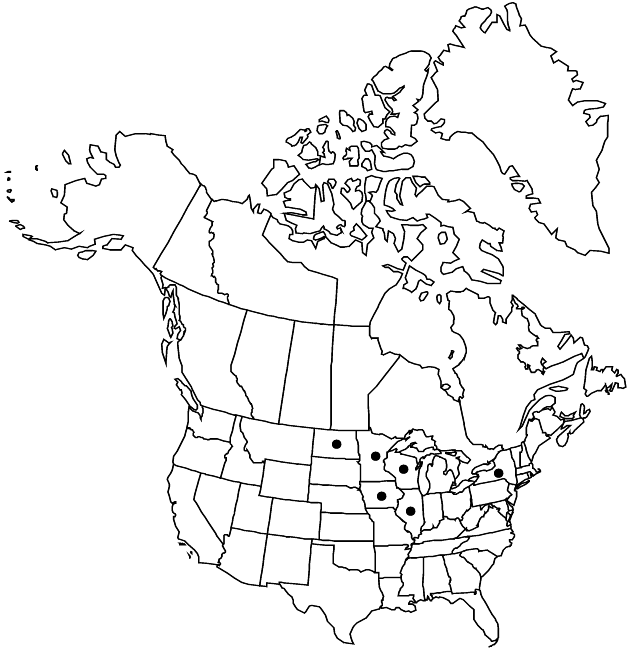Artemisia serrata
Gen. N. Amer. Pl. 2: 142. 1818.
Perennials, 50–100 (–300) cm (not cespitose), pleasantly aromatic (fibrous-rooted, rhizomes horizontal, relatively short). Stems 2–5, erect, brown, mostly simple (bases woody), sparsely tomentose. Leaves cauline, bicolor (white and green); blades lanceolate, 7–15 × 1–2.5 cm, serrate (teeth ca. 2 mm), faces densely tomentose (abaxial) or glabrate (adaxial). Heads (peduncles 0 or to 2 mm) in racemiform arrays 10–15 × 5–15 cm. Involucres campanulate, 2.5–3 × 2–2.5 mm. Phyllaries lanceolate (margins hyaline), densely tomentose. Florets: pistillate 3–5; bisexual 9–10; corollas pale-yellow, 1.5–2 mm, sparsely glandular. Cypselae ellipsoid, ca. 1 mm, glabrous. 2n = 36.
Phenology: Flowering mid summer–early fall.
Habitat: Grasslands and barren areas on high plains
Elevation: 500–1800 m
Distribution

Ill., Iowa, Minn., N.Y., N.Dak., Wis.
Discussion
Artemisia serrata is closely related to A. ludoviciana and A. longifolia; it is distinguished by its prominent, serrated leaf margins. It is apparently native to the upper Mississippi Valley and naturalized in New York, presumably following introduction as a garden plant. Reports from Kansas and Missouri may be based on collections of A. ludoviciana.
Selected References
None.